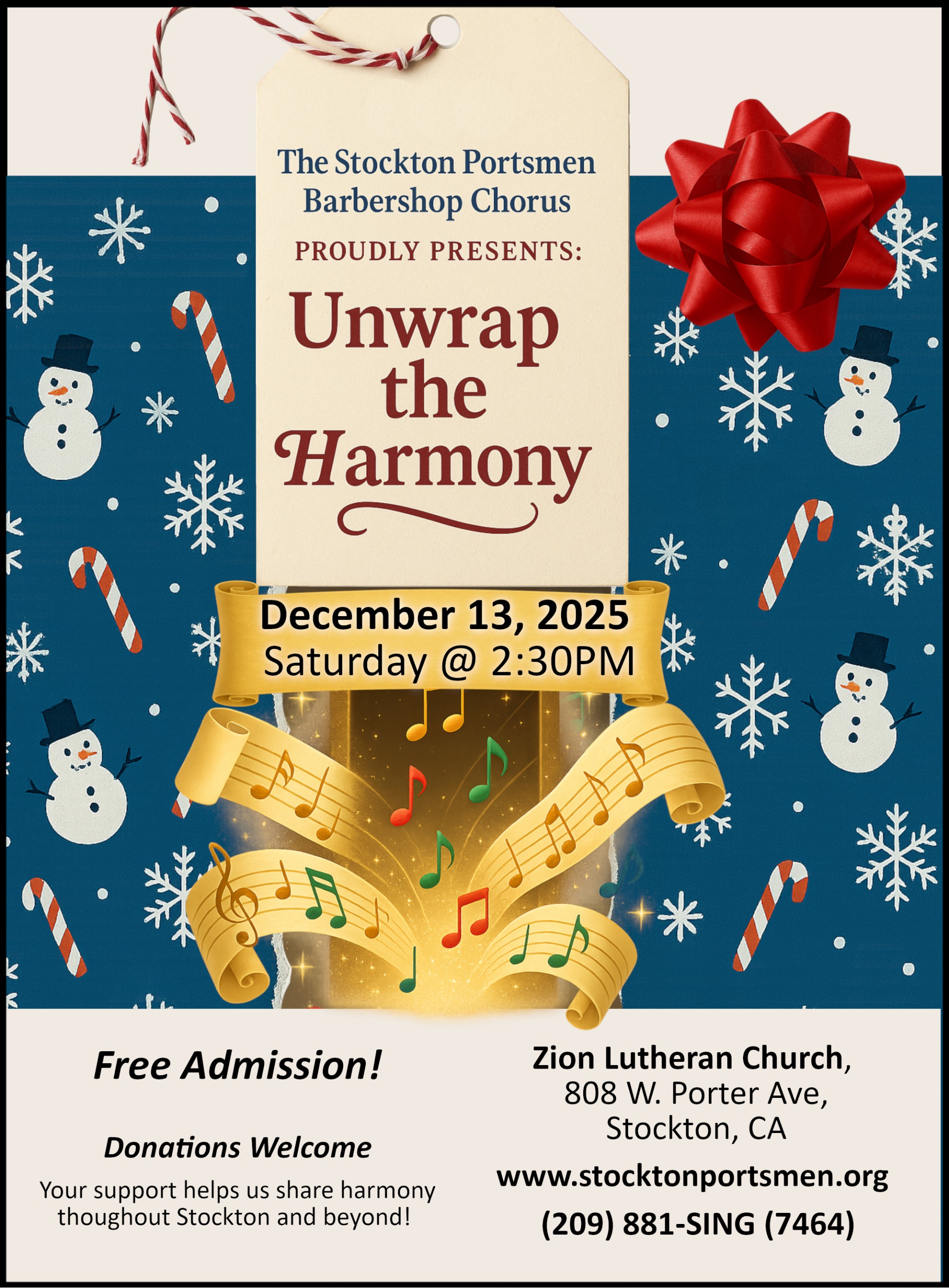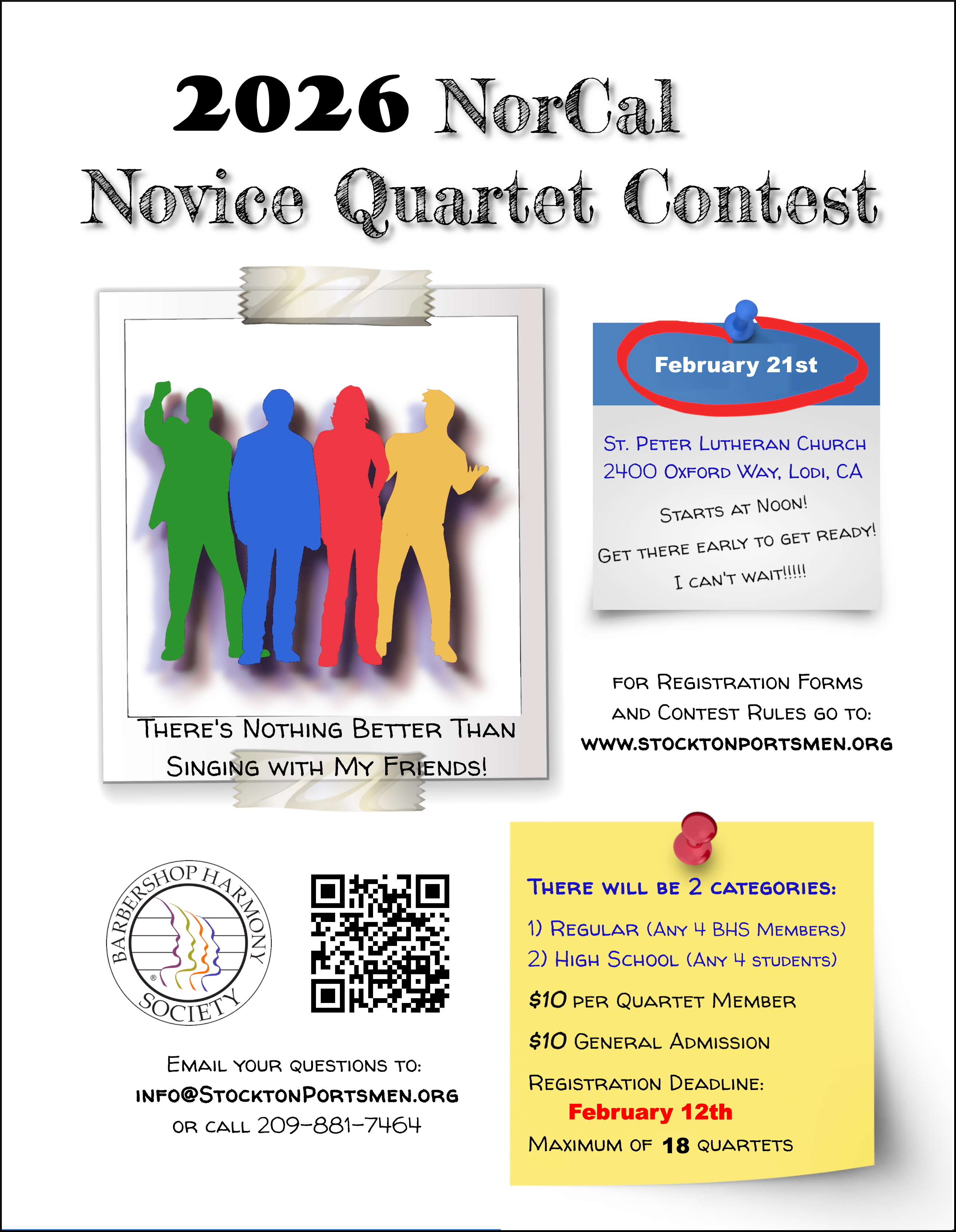DEFINITION OF THE BARBERSHOP STYLE
Barbershop harmony is a style of unaccompanied vocal music characterized by consonant four-part chords for every melody note in a predominantly homophonic texture. The melody is consistently sung by the lead, with the tenor harmonizing above the melody, the bass singing the lowest harmonizing notes, and the baritone completing the chord. Occasional brief passages may be sung by fewer than four voice parts.
Barbershop music features songs with understandable lyrics and easily singable melodies, whose tones clearly define a tonal center and imply major and minor chords and barbershop (dominant and secondary dominant) seventh chords that often resolve around the circle of fifths, while also making use of other resolutions.
Barbershop music also features a balanced and symmetrical form, and a standard meter. The basic song and its harmonization are embellished by the arranger to provide appropriate support of the song's theme and to close the song effectively.
Barbershop singers adjust pitches to achieve perfectly tuned chords in just intonation while remaining true to the established tonal center. Artistic singing in the barbershop style exhibits a fullness or expansion of sound, precise intonation, a high degree of vocal skill, and a high level of unity and consistency within the ensemble. Ideally, these elements are natural, unmanufactured, and free from apparent effort.
The presentation of barbershop music uses appropriate musical and visual methods to convey the theme of the song and provide the audience with an emotionally satisfying and entertaining experience. The musical and visual delivery is from the heart, believable, and sensitive to the song and its arrangement throughout. The most stylistic presentation artistically melds together the musical and visual aspects to create and sustain the illusions suggested by the music.



